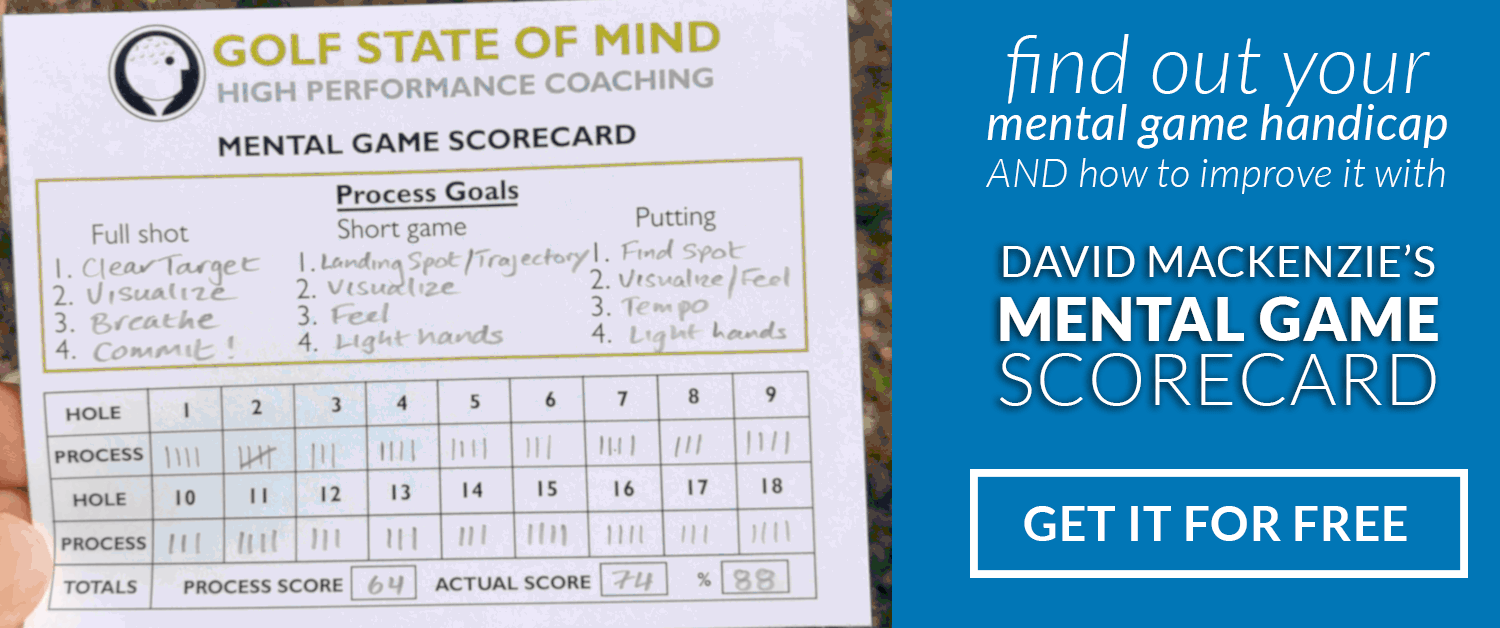
The Best Swing Thoughts For Golf
The subject of what to focus on during your swing, or the best swing thoughts for golf is one which sparks some debate. Some sports psychologists will tell you that you can’t play your best while thinking about your swing and there are many coaches who recommend having technical swing thoughts. So what’s right?
Research shows that there’s no right or wrong answer. The best swing thoughts for golf have a lot to do with the learning style of the individual and where they are with their game. It’s true that most Tour players don’t have any technical swing thoughts during their swing, but that doesn’t necessarily mean it should be the same for the weekend player.
Generally speaking, swing thoughts can help you:
- Keep you focused on something productive during your swing instead of what you don’t want to happen
- Keep your conscious mind occupied with something simple so that your athletic mind can swing the club
- Help you maintain a good tempo
However, if a player starts to get overly technical and switch between swing thoughts throughout a round, it usually hinders performance.
In this article, I’d like to help you find out what the best swing thoughts for golf are for you, to give you the best opportunity to score well.
The Best Swing Thoughts For Golf:
The trick to finding effective swing thoughts is through self-discovery about how you best learn and communicate, and experimentation with different of types swing thoughts.
What Is Your Learning Style?
Your learning style is an important factor in your mental approach to golf. Knowing whether you are a visual, auditory, kinesthetic or verbal learner could make a difference in how you make swing changes and what swing thoughts will work best during your rounds.
A study by Dr. Noel Rousseau showed that someone more “left brained” (logical, analytical and verbal) can get better results when they have some sort verbal instruction or cues during the swing (some individuals are capable of a higher “cognitive load” and multiple swing thoughts). Bryson DeChambeau would be a good example of this. On the other hand, those who are more “right brained” (visual, artistic and non-verbal), typically swing better when there is less cognitive load or very little conscious awareness of their movement during the swing. Knowing this about yourself is a good place to start.
Where Are You In The Development Of Your game?
It’s one thing for a Tour player not to have any swing thoughts (even though many still do) as their swings are highly evolved. You don’t reach Tour player level without first having a highly efficient golf swing that is pretty much automatic. So it’s one thing for a Tour player to say that they “don’t think about anything” during their swing, but that doesn’t mean that it’s going to work for you. If you’re undergoing swing changes, you might want to focus on a simple swing thought that is helping you correct an inefficiency in your swing. Overtime, and with practice, the more automated it will become and the less you’ll need the self-guidance.
Technical Cues
Technical cues are unique to the individual but should be kept as simple as possible, They are typically things that you are working on in your swing or tendencies you know you have when playing under pressure. Simplicity is key here – you don’t want to overload your “working memory” and interfere with the movement centers of your brain.
Examples are:
“controlled high finish”
“full shoulder turn”
“wide takeaway”
“keep your height”
“swing to the target”
“get onto your left side”
“Low tension on the downswing”
Know Your Tendencies Under Pressure
Another good way to identify the best swing thoughts for golf (for you) is to know your tendencies under pressure. When you’re not playing well or feeling nervous, are you aware of what changes in your swing? Do you get quick and tense? Do you start to move from one swing thought to the next? Do you come out of your posture too early while putting? Whatever it might be, focusing on swing thoughts that ensure you avoid those tendencies can help you when you are feeling under pressure.
Auditory Swing Thoughts
When we feel pressure on the golf course or when we’re playing badly, one of the first things to be affected is tempo. Tempo is important as it controls the timing and sequencing of the several moving parts of the golf swing. When your timing is off, so will the direction of the club-face be at impact. Although tempo swing thoughts can benefit all players, because it’s about sound, it could be more effective for players who are more auditory or musical.
Examples of tempo swing thoughts are words or songs/music/beats that help you swing at your optimal tempo. John Novosel’s Tour Tempo app has been successful in helping many of my students maintain a good tempo on the golf course. Tempo swing thoughts can also help take any focus away from anything mechanical and keep the swing nice and fluid.
External vs Internal Focus
The concept of External and Internal Focus was coined by Dr. Gabrielle Wulf, a Professor of Motor Learning at the University of Nevada. She conducted research and experiments over many years which looked at the effect of where an athlete put their focus during movement.
External focus is when you keep your focus on what the effect of the movement will be, rather than the movement itself. For example when you throw a basketball you are probably just looking at the basket and throwing the ball. That is external focus. If I was to say to you to be aware of the angle of your wrists and how far your arms go back to throw the ball, that would be internal focus.
Dr. Wulf’s studies concluded that the performance of players was improved when golfers (all various ability levels) focused more on the effect of the swing and their movement, rather than the position of body parts, which creates tension and inhibits fluidity.
If you want to find out more about Dr. Wulf’s study of attentional focus on motor learning, check it out here.
Examples of External Swing Thoughts
- Focusing on your connection with the ground
- Noticing the pressure in your feet, your balance
- Anticipating the feel of the strike at impact
- Swinging out to the right
Don’t Get Overly Technical During Practice
Most golfers only practice with technical swing thoughts and then expect to go to the golf course and do something different. It’s important we don’t neglect developing our “playing skills” and treat the driving range more like the course, instead of a place where we only think about improving technique. Another trap that many golfers fall into is getting too technical when they start to play badly. Even some Tour players can start to look for technical fixes when they start missing their targets and start focusing more and more on body positions during the swing, instead of trusting themselves to hit the shots. They might start with a simple swing thought, and then as the round goes on that swing thought can change from shot to shot as the player becomes more and more internally focused and loses trust in their swing. It’s fine to make adjustments, but focus on them during your rehearsal swings, then go back to your original swing thought during the shot itself.
Whatever Your Swing Thought, Make It Flow
Whatever swing thought you choose, it’s important that your engagement with the target and the intention for the shot isn’t compromised. If you find yourself standing over the ball thinking about what you’re going to do with your swing, you’re losing connection with the intention for the shot and you are less athletic.
Conclusion
The studies show that the best swing thoughts for golf are those that divert attention away from the positions of the body, but the player needs to experiment to discover what works for them. It’s important not to go by what other players are doing as what works for one player, might not work for you, which is the same for any of the mental skills for golf.


